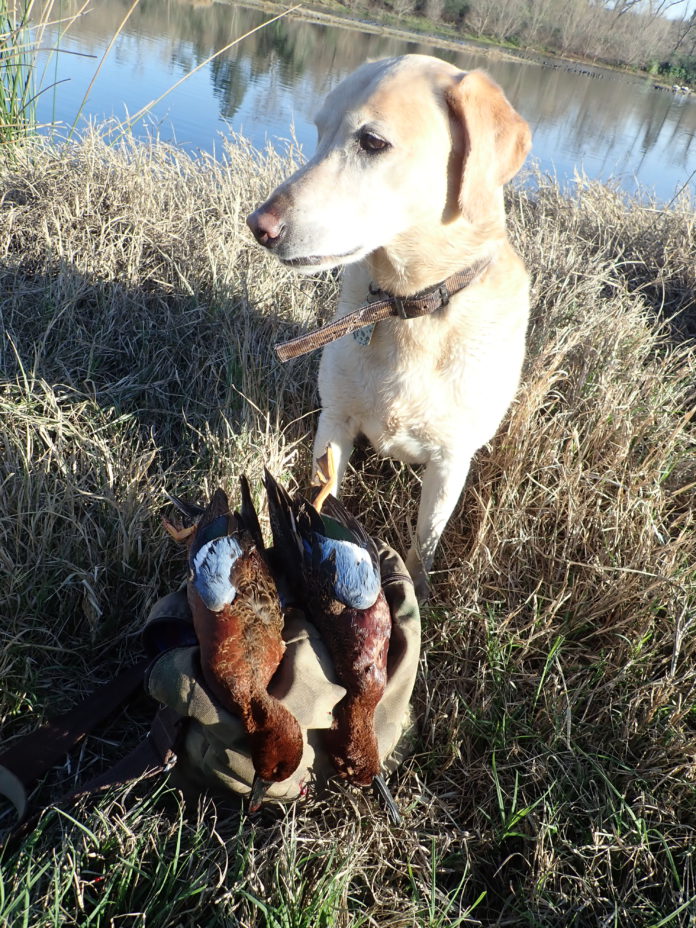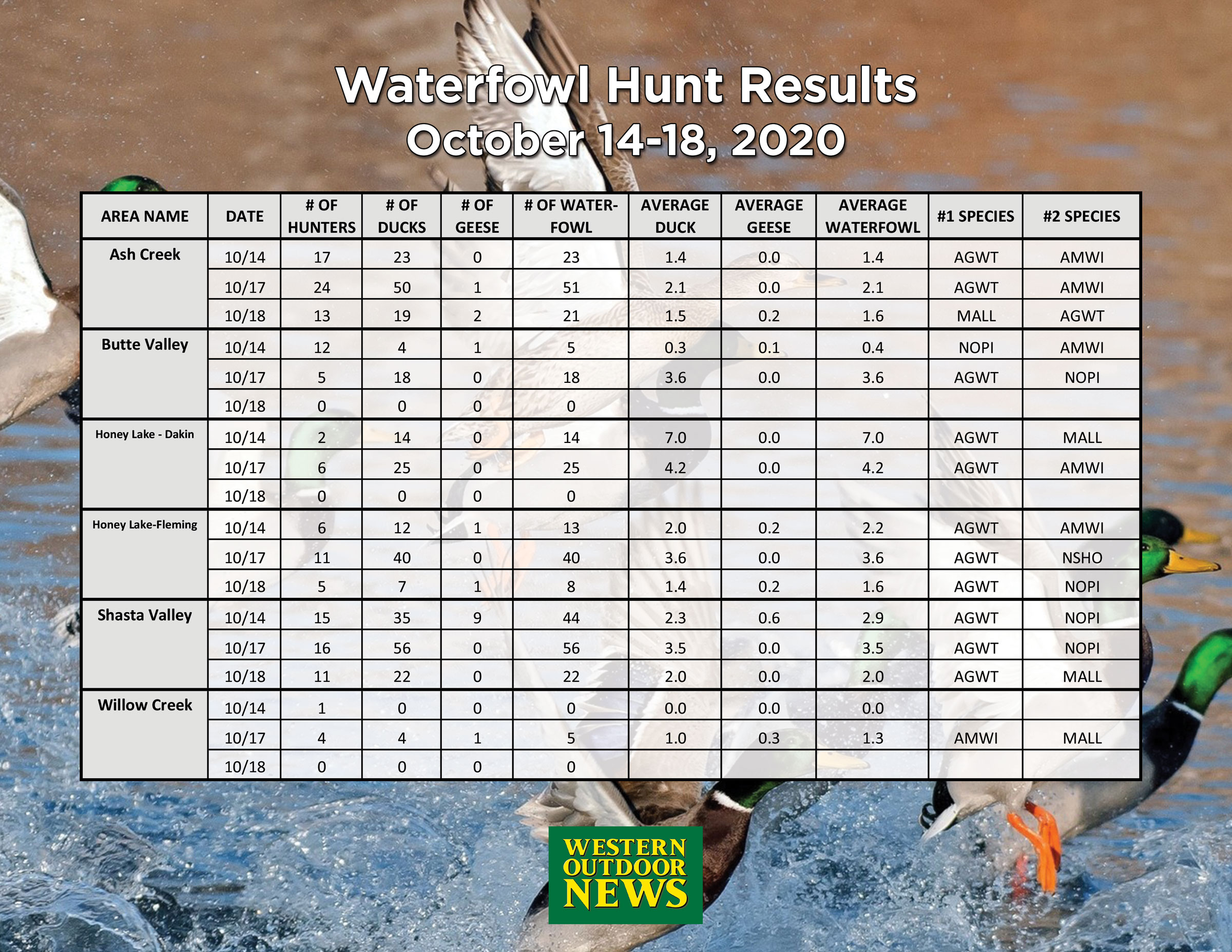
Pre-opener waterfowl counts about average
BY JIM NIEMEIC
NILAND – Duck numbers are building daily at refuges and duck clubs in the southern portion of the Pacific Flyway. Migrating, dabbling ducks are mixing with locally hatched mallards, teal and gadwall, and should offer up about average duck hunting come opening morning. Presently, based on reports coming into Western Outdoor News, there are just a few divers around and goose numbers remain low.
Scott Sewell, Wildlife Habitat Supervisor II, offered up the following information on the status of Wister and San Jacinto, of which both refuges are under his management area.
“Right now, Wister is looking great. IWA is holding several thousand birds (somewhere between 5,000-7,000), along with a few white and dark geese. There are lots of teal on the ponds along with a huntable number of pintails, a good count on mallards and some spoonies,” said Sewell.
The report from the San Jacinto Wildlife Refuge also reflected about average numbers of ducks along with a few divers. There are also some specks and Canada geese hanging around.
“San Jacinto Wildlife Area is holding somewhere between 3,000 and 4,000 puddle ducks. The most numerous species of duck appears to be teal (both greenwing and cinnamon), spoonies, some mallards and a few pintails,” reports Sewell.
Sewell added to his report that both IWA and SJWA areas are flooded up nicely (90-98 percent flooded) and ready for opening day hunters.
The checking-in process will see some changes come opening morning due to the COVID-19 issue. The following details were passed on by Sewell and will likely be the protocol for all hunters choosing to hunt at state and federal refuges, at least in California.
“Please let your WON readers know that they will need to be prepared for the opener in respect to COVID-19. Please have them provide physical distancing, waiting patiently, waiting to be called from the check station, wear face coverings, pick their blinds quickly, allowing others to follow quickly and most importantly be safe and respectful to my staff and fellow hunters, as we make our way through this one of kind opener,” stated Sewell.
WON made a call down to Chris Stoneman, Wildlife Biologist for the Sonny Bono National Wildlife area, who reported the following.
“The refuge saw its first small flock of snow geese the first week of October and this was a pretty early arrival. Come the end of the month this refuge should be holding nearly 1,000 white geese, but that is dependent upon the migration. The hunting unit of this refuge is 100 percent flooded and ready for hunting, while Unit 1 is 95 percent flooded. We had to hold off planting rye grass due the hot temperatures down here in Imperial Valley. If we plant when the day time temps are above 105 degrees it burns the seeds before they can germinate,” said Stoneman.
WON received the following updated report from Nick Stanley, Project Manager for the Kern National Wildlife Refuge.
“Kern, to date, has about 2,000 acres flooded for the opener, and will continue to flood up through the season to provide new habitat and hunt areas until late December. The staff has overcome many obstacles with the current challenges placed upon us,” said Stanley.
Stanley went on to state, “Kern is currently holding several thousand birds (5,000-7,000) and on the last survey (this past week) there are also a couple dozen white-fronted geese on the refuge. Its still really early in the migration season, so most of the ducks are dabblers with lots of teal, pintail, spoonies, gadwall and mallards in the mix. Although this refuge, along with all other state and federal refuges, did take a cut in water allocation for the ‘20-‘21 season, the refuge will use all allocated water to flood as many acres as possible.”
The three duck clubs in Prado Basin now have ponds flooded up. Patrick Raahauge, operator of Raahauge’s Duck Club, told Western Outdoor News that there are lots of ducks in the basin. Mallards are by far the number one duck using the ponds, but other ducks are arriving daily and Raahauge’s believes it will be a good opener.
A relatively new duck hunting refuge is now open to waterfowl and upland game bird hunting. The Palo Verde Ecological reserve (760-922-9189), located just north of Blythe on the California side of the lower Colorado River, consists of about 60 acres of wetlands. According to Rick Francis, Wildlife Habitat Supervisor I, this refuge is currently being flooded and now there are ducks on the ponded water every day since water started flowing into area. The food in the ponds consists of swamp Timothy, nut and rye grass. Waterfowl that have been loafing on the reserve consists of a few white-fronted geese, pintail and teal, which are migrating through the valley. No reservations are needed to hunt this refuge and respectful first-come/first-serve rules are in place.
Interesting to note: Perhaps the massive wildfires that produced tons of unhealthy smoke across all of the Pacific Flyway might have an effect on the timely arrival of waterfowl in Southern and Central California. WON drove past Little Lake off Hwy. 395 this past week and there were just a few coots on the placid lake, far fewer than what one would expect this close to opening weekend. Farther to the north, the Upper Owens River in Long Valley flows through Arcularius on the River ranch (760-387-2692), which rents a cabin offering “catch and release” fly fishing. Over the course of five days of fly fishing, this hunting writer saw at most only 10 locally hatched ducks. Over the past decade, having visited the ranch each fall, always seeing plenty of dabbling ducks. So perhaps the amount of smoke — you could not see Mammoth Mountain — will delay the migration of ducks in parts of this flyway.




